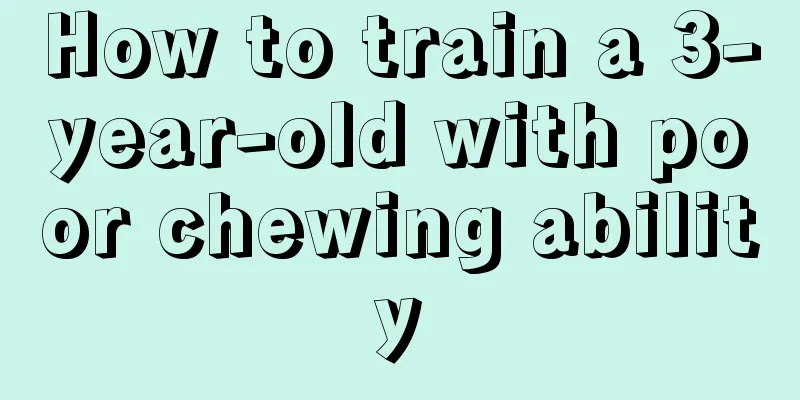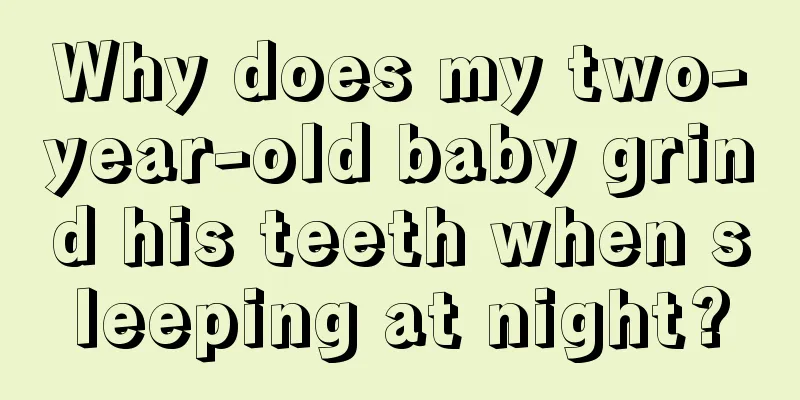How to train a 3-year-old with poor chewing ability

|
A child’s physical health is inseparable from his or her eating ability. If a child has a strong chewing ability, he or she will be able to obtain a large amount of nutrients to supplement the needs of growth. Therefore, it is very necessary to pay attention to the development of a child’s chewing ability. In modern life, many children have a decline in chewing ability. Let’s take a look at how to train a 3-year-old with poor chewing ability? I hope parents can understand this. How to train your baby's chewing ability How to train your child's chewing ability 1. Mothers can prepare paste or mud-like foods for their babies so that they have the opportunity to train oral movements. 2. Provide your baby with long pieces of fruit, cooked vegetable slices or slightly harder biscuits so that your baby can get used to eating solid food. As long as the baby is willing, you can provide adult food to the baby, but it is still necessary to observe the baby's digestive and absorption reactions. At about 1 and a half years old, babies can eat the same food as adults, but some foods need to be cut into appropriate sizes or pieces, but don't cut them too finely. After the age of 3, babies can slowly process adult food and become more and more adept at using their teeth. In addition, babies at this stage also have good imitation abilities. Parents may wish to demonstrate actions frequently, reminding babies to bite and chew food, so that babies can smoothly transition to regular meals. Provide your baby with long pieces of fruit, cooked vegetable segments or slightly harder biscuits to help your baby get used to eating solid foods. As long as the baby is willing, you can provide him with adult food, but you still need to observe the baby's digestive and absorption reactions. When the baby is about one and a half years old, you can provide the same food as adults. Provide your baby with food that he can scoop or grasp in a more uniform manner. It is best to let your baby learn to feed himself. You can provide your baby with some toys that can train or stimulate oral movements, such as small trumpets, whistles, etc. You can also teach your baby to blow paper pieces, bubbles, etc., which is conducive to language development. |
>>: What to do if your baby lacks vitamins
Recommend
Diet therapy for mild anemia in children
Nowadays, many children are picky eaters, which h...
What's wrong with my child's cold hands, dizziness and chest tightness?
Children's physical development is very fast,...
What are the symptoms of hernia in children?
Generally, if a child has pediatric hernia, there...
Causes of neonatal erythema
In winter, you often see red cheeks, as red as ap...
Teach you how to judge neonatal erythema
Many parents find that newborns have erythema on ...
Should children wear socks when they sleep at night?
Children are the ones who need our most careful c...
What is the method of spinal massage treatment for children?
Everyone has a spine that supports the bones of t...
What should I do if my baby sweats a lot while sleeping?
The baby's physical health is what parents ca...
Seven and a half month baby food recipes
Babies of seven and a half months old have a part...
Baby's stool is loose after eating milk powder
Many newborns are mostly fed with breast milk aft...
What should children eat if they have a broken bone?
The elderly are a relatively special group. Due t...
What to do if a 5-year-old child has a fever
Babies aged four or five are the most lively and ...
What to eat when your baby is teething
Mothers are always paying attention to the physic...
Treatment of hip synovitis in children
Every child is the apple of the parents' eyes...
What kind of exercise can help children grow taller?
Height is a representation of everyone's imag...









